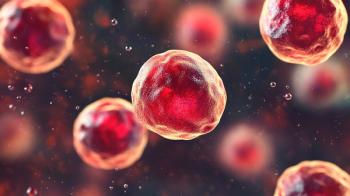
A Brief Look at the Clinical Uses of N-Acetylcysteine
N-Acetylcysteine has several clinical uses. These include detoxification in acetaminophen overdose and improving outcomes in COPD exacerbations.
N-Acetylcysteine (NAC) is, as the name suggests, an acetylated cysteine compound. Depending on the indication, the drug can be administered orally, intravenously, or via inhalation. Possible uses vary widely; the most common indications are detoxification of acetaminophen (APAP), and facilitating chronic obstructive pulmonary disease (
DETOXIFICATION PROPERTIES
Over 90% of a therapeutic APAP dose is conjugated with either glucuronide or sulfate. About 5% of the remaining quantity is oxidized by CYP2E1 to N-acetyl-p-benzoquinone imine (NAPQI), a reactive metabolite that is toxic to the liver.1 Because the liver has its own supply of glutathione, rapid detoxification of NAPQI from therapeutic doses is possible. Glutathione’s sulfhydryl group binds to NAPQI and forms cysteine and mercapturic conjugates that are excreted in urine. As a result, NAPQI covalent binding to proteins does not occur and thus hepatocytes are spared.2 In both acute and chronic supratherapeutic doses, however, these supplies of glutathione are diminished and NAPQI is free to exert its toxic effects.
Administration of NAC has been shown to replenish glutathione stores and reduce incidence of mortality.1 Because APAP toxicity requires higher doses of NAC, its typical adverse effects (nausea, vomiting, diarrhea, flushing) may be overshadowed by more serious reactions (tinnitus, rash, itching, chills, pseudoanaphylaxis).3
MUCOLYTIC PROPERTIES
NAC also plays an important role in managing COPD exacerbations. When inhaled, the mucolytic reduces disulfide bonds to a sulfhydryl bond. This separation of glycopeptides results in loosened mucus and decreased sputum viscosity, thereby allowing patients to breathe more easily.4,5
These mucolytic properties also lend to NAC’s antioxidant capabilities. Once it’s metabolized to cysteine it can reduce thiol bonds through donation of sulfhydryl groups. NAC can directly scavenge reactive oxygen species (e.g., peroxide, hydroxyl radicals, and superoxide). These scavenging properties may also have a role in providing anti-inflammatory effects, providing further appeal in COPD use.4
OTHER USES
NAC has also been studied in preservation of lung function in COPD, preservation of lung function in idiopathic pulmonary fibrosis, attenuation of influenza illness, contrast-induced nephropathy, and treating infertility in women with clomiphene-resistant polycystic ovary syndrome (PCOS). The data are not always decisive and concluding when it comes to NAC use in these other clinical scenarios. In contrast-induced nephropathy for example, only 7 of 13 meta-analyses showed benefit, 5 did not, and 1 was inconclusive.3
References
- Heard KJ. Acetylcysteine for Acetaminophen Poisoning. N Engl J Med. 2008; 359(3): 285-292. doi: 10.1056/NEJMct0708278
- Hinson JA, Roberts DW, James LP. Mechanisms of Acetaminophen-Induced Liver Necrosis. Handb Exp Pharmacol. 2010;196: 369-405. doi: 10.1007/978-3-642-00663-0_12
- Millea PJ. N-Acetylcysteine: Multiple Clinical Applications. Am Fam Physician. 2009;80(3): 265-269.
- Sadowska AM, Verbraecken J, Darquennes K, De Backer WA. Role of N-acetylcysteine in the management of COPD. Int J Chron Obstruct Pulmon Dis. 2006;1(4): 425-434.
- Fishbane S. N-Acetylcysteine in the Prevention of Contrast-Induced Nephropathy. Clin J Am Soc Nephrol. 2008 Jan;3(1):281-7. Epub 2007 Nov 14.
Newsletter
Stay informed on drug updates, treatment guidelines, and pharmacy practice trends—subscribe to Pharmacy Times for weekly clinical insights.



















































































































































































































